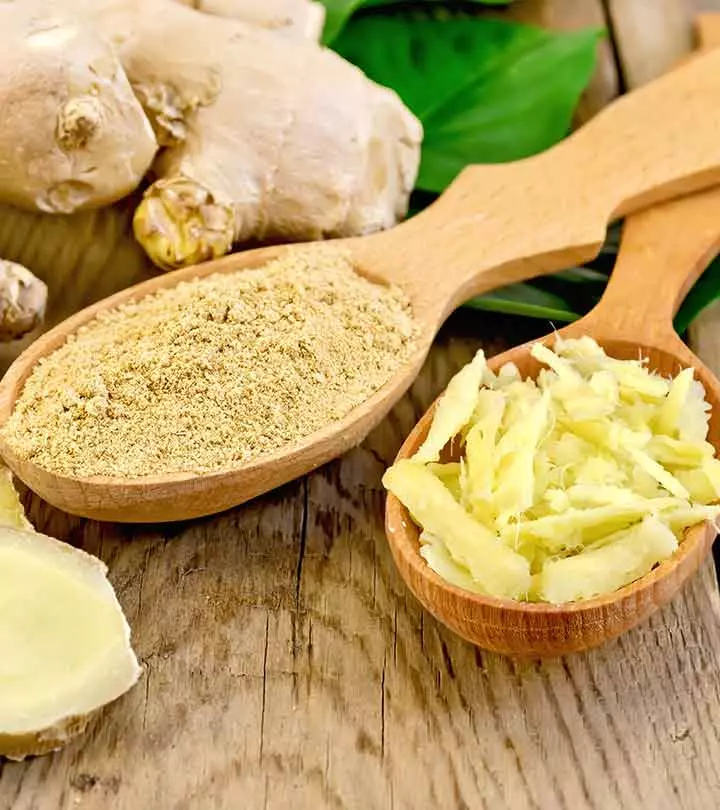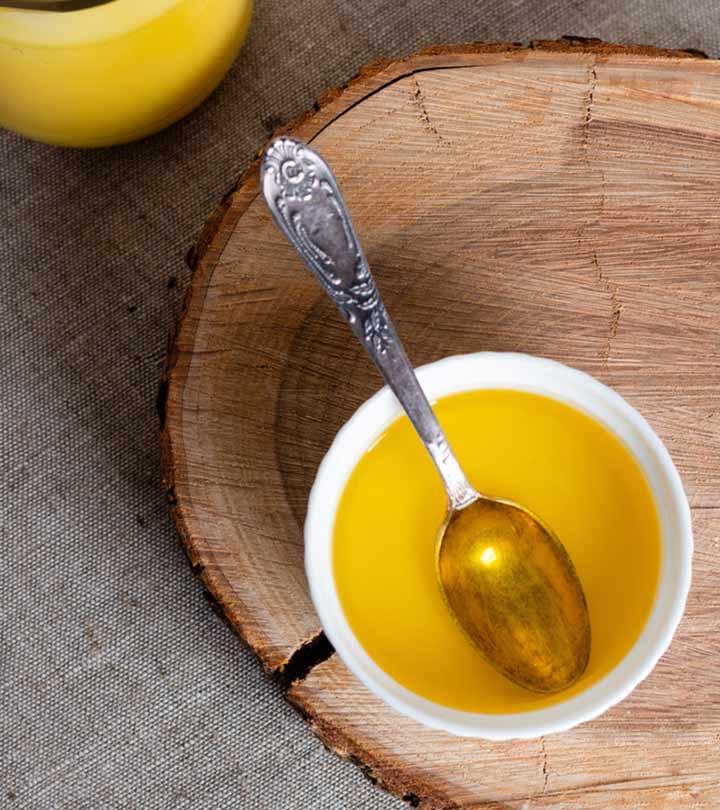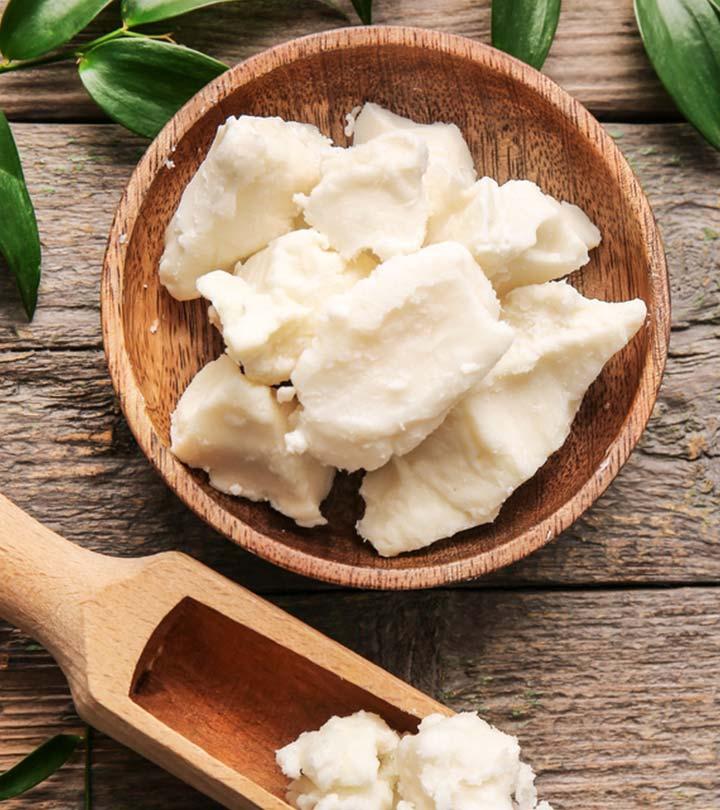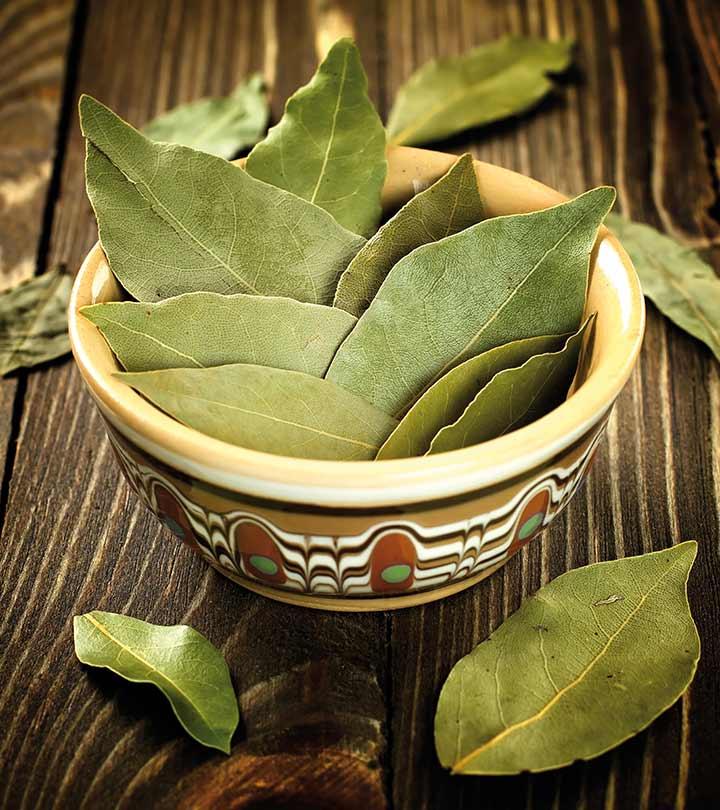25 Best Benefits Of Barley (Jau) For Health, Skin, And Hair
Enjoy the multitude of blessings this super healthy and tasty cereal grain has to offer.

Image: Shutterstock
The many benefits of barley (jau) make this nutritious food a must-have. Barley is known as the “”King of Cereals.””
Barley is versatile in its culinary preparation and is used in soups and stews. Beer and other alcoholic beverages are also made from barley.
Barley can provide a variety of nutrients that may be beneficial to your diet, including carbohydrates, soluble and insoluble fibers, sodium, vitamins, minerals, amino acids, and fatty acids.
Barley lowers the risk of various cardiovascular diseases. It also ensures the normal function of the kidneys, urinary tract, liver, bones, and joints.
This article discusses the benefits of barley, its types, nutritional profile, and any potential side effects. Read on.
Let’s start from the scratch and look at some basic information.
Biological Name: Hordeum vulgare
Name In Other Languages: Jau (Hindi), Juvar/Cheno (Gujarati), Barli Arisi (Tamil), Barli Biyyam (Telugu), Shaeir (Arabic), Cebada (Spanish), Cevada (Portugese), and Orge (French).
And now, let’s deal with the first most important question: why should you use barley? Here’s your answer.
 Know Your Ingredient: Barley
Know Your Ingredient: BarleyWhat Is It?
Barley is a cereal grain that is used in culinary preparation and beverage production and is known for its nutty flavor.
What Are Its Benefits?
It may help boost the immune system, digestion, skin health, hair growth, and help control blood pressure, and cholesterol, and even aid in weight loss.
Who Can Consume It?
It can be safely consumed by all and even pregnant women. However, a person with celiac disease or gluten sensitivity should not consume this grain.
How Often?
You can consume it in moderation once or twice a day.
Caution
Overconsuming may cause bloating, cramps, or gas.
In This Article
What Are The Health Benefits Of Barley?
This innocent question has multiple answers. Barley contains all nutrients that are vital for maintaining optimum health. It is great for heart health since it protects the heart against various cardiovascular diseases. It also protects the kidneys, urinary tract, liver, bones, and joints and ensures their normal functioning. Barley also has several other benefits, which are all discussed below.
1. Lowers Blood Pressure And Cholesterol
Regular consumption of barley can help stabilize your blood pressure and lower high cholesterol levels in your blood. These satiety center grains are rich in soluble fiber, the kind that is helpful in reducing LDL in the blood.
A 2006 study published in the Journal of American Dietetic Association claims that increasing the intake of whole grains, high in either soluble or insoluble fiber, helps to reduce blood pressure and maintain a healthy weight (1).
Another study was done in 2009 on healthy and hypercholesterolemici Also referred to as high cholesterol, this disorder is caused due to excess levels of LDL or bad cholesterol in the blood. men and women to determine and record a change, if any, in serum lipid and cholesterol levels on consumption of barley. The duration of the study varied from 4 to 12 weeks, and it concluded that barley significantly reduced the total cholesterol, LDL, and triglyceride levels in the body, but did not affect the HDL cholesterol (2).
2. Helps You Lose Weight
Trying to lose weight? Think barley. It is packed with essential vitamins and minerals. It is also rich in fiber and protein and very low in fat, cholesterol, and sugar content. These properties make barley an ideal weight loss agent.
The most important property of barley is that it contains soluble fiber, which goes into the intestines and prevents the fats and cholesterol from being absorbed into the blood (3). If consumed regularly, your risk of obesity goes down significantly. If you are looking to reduce your hunger pangs and manage weight, this high fiber superfood will help in modulating ghrelin profile. This satiety hormone Ghrelin helps us to keep our appetite low and makes us feel full. Hence the longer you feel full the longer you won’t have hunger pangs. Simplilarly, satiety hormone leptin does the same for your body.
Drinking barley water has recently become a very popular way to burn calories. It can be easily prepared, and about 2 to 3 glasses can be consumed every day to speed up your metabolism and burn more calories. When mixed with lemon and honey, barley water is a wonderful alternative to high-calorie or high-sugar beverages.
3. Reduces Your Risk Of Cancer
This fiber-rich grain has the potential to protect you from different types of cancers by boosting your intestinal health and improving your immune system. Not just the grain, but barley grass is also rich in B vitamins and chlorophyll that detoxify the body and destroy the cancer cells and free radicals in the body.
A paper published by Colorado State University states that eating whole grains like barley can help prevent the risk of colon and rectal cancers (4). The fiber present in barley helps to facilitate the movement of food through the intestinal tract and out of the body at regular intervals. This also ensures a healthy intestine.
Another 2015 study was done in Southwest China to determine the correlation between Yunnan and Tibet having the lowest cancer mortality and being the larger producers of anti-cancer crops like barley, brown rice, buckwheat, tea, etc. The study suggested that the anti-cancer activities are higher in barley compared to the other crops (5).
A study done in 2014 examined the effects of β-d-glucans (components of plant cells) on breast cancer cells. The study proved that barley helps to cease the rapid cell division of endocrine-resistant breast cancer cells (6).
4. Reduces Symptoms Of Arthritis
An article published by Michigan State University claims that consuming a high-fiber diet decreases inflammation (7).
It also goes on to suggest that some whole grains like barley contain soluble fiber, which helps the body absorb nutrients better and reduce any pain related to swelling and inflammation of the joints or arthritis.
5. Promotes Healthy Bones And Teeth
Barley contains several essential vitamins and minerals, some of which are phosphorus, manganese, calcium, and copper. All these nutrients are important for maintaining healthy bones and teeth.
Barley juice is exceptionally high in calcium, containing 11 times more calcium than milk. This helps to maintain the overall health and strength of the bones and teeth.
Scientists say that drinking barley juice also helps prevent osteoporosis. It may not completely cure osteoporosis, but barley juice helps treat the symptoms related to it and reduces your risk of developing osteoporosis.
Not much research has been done to test this claim, but physicians and nutritionists all over the world agree that all whole grains, barley included, promote healthy bones and teeth.
6. Combats Diabetes
Barley has amazing potential to fight diabetes and lower its prevalence.
A study was done in 2014 to test the effectiveness of barley seeds consumption in diabetic rats for 11 days. Diabetes was induced in the rats, and they were treated with extracts of barley seeds. Blood samples were consistently tested for 11 days. The study concluded that the barley extracts were very effective in reducing the blood sugar levels in the rats (8). Moreover, the study also suggested that eating fiber-rich whole grains, such as barley, delays the absorption of glucose into the bloodstream.
Another study done in 2012 tested the satietyi It refers to a feeling or state of being full and satisfied following the consumption of food. response of barley as compared to white bread. The study showed that barley evoked better satiety than white bread, and this was negatively related to a lower glucose response in the blood (9).
A small study done in 2006 on African American women in the US tested the association between eating a diet rich in magnesium and calcium and the risk of Type 2 diabetes. The study followed the food frequency patterns of 41,186 women for 8 years and found that the daily consumption of magnesium-rich foods, especially whole grains, was linked to a lower risk of type-2 diabetes (10). Barley is one such whole grain that is extremely rich in both magnesium and calcium.
7. Prevents Gallstones
Barley is known to prevent the formation of gallstones in women quite effectively. Since it is rich in fiber, it reduces the secretion of bile acids, thus increasing insulin sensitivity and reducing the level of triglyceridesi A type of lipid in the blood, which is produced by the body or obtained from food sources. in the body (11).
Women who consume a fiber-rich diet are known to have a lower risk of developing gallstones as compared to those who do not consume fiber.
Barley is also known to prevent kidney stones and support kidney health by cleansing and detoxifying the kidneys, but there is no strong research to support this statement.
8. Promotes Cardiovascular Health
As mentioned earlier, barley is known to reduce blood pressure and lower cholesterol levels in the body.
The Harvard School of Public Health claims that consuming whole grains gives your body a wide range of nutrients that promote a healthy heart and prevent cardiovascular diseases (12). It also suggests choosing whole grains like barley instead of refined grains.
This was also investigated by the research agency at USDA. They found that eating food that contained barley significantly improved various cardiovascular risk factors (13).
9. Reduces Your Child’s Risk Of Developing Asthma
Did you know barley can benefit your infant, as well?
A 2013 study done on 3,781 consecutively born infants in Finland tested the early introduction of certain whole grains to infants and their association to allergic diseases.
The study concluded that introducing barley to infants around the age of 5 to 5.5 months seemed to reduce the risk of developing asthma in early childhood (14).
10. Gives Your Immune System A Boost
Barley contains beta-glucan, a type of fiber that is rich in antioxidants. It also contains a rich amount of vitamin C, a nutrient that is known to boost the immune system. Consuming barley on a regular basis also helps to speed up wound healing and help the body resist cold and flu (15).
When taken along with antibiotics, barley helps to promote the function and effectiveness of the medication.
11. Improves Digestion And Constipation
Barley is said to contain the most amount of fiber among all the grains. One cup of barley contains 13 grams of fiber (16). The insoluble fiber present in barley works as a probiotic to benefit the friendly bacteria in the intestine, and the roughage aids bowel movement and digestion and prevents constipation.
Maharishi University of Management, an Ayurvedic institute, highly recommends adding barley to our diets in the form of soups or side meals or sipping barley water throughout the day for better digestion (17).
The fiber in barley facilitates the movement of food through the intestines and outside the body, thereby preventing constipation.
12. Is Beneficial During Pregnancy
This one is a no-brainer. We know that barley is a powerhouse of vital nutrients, fiber, and antioxidants, also it helps in satiation of hunger.
Drinking barley water every day works like magic to promote better digestion and ease morning sickness. It also helps to regulate blood sugar levels, thus preventing the risk of gestational diabetes. Its diuretic nature prevents water retention during pregnancy.
The FDA recommends eating barley as one of the main whole grains during pregnancy since consuming fortified cereals may sometimes not be enough (18).
An article by the University of Rochester talks about how eating right before conceiving can impact your health as well as your baby’s health during pregnancy. Incorporating whole grains like barley in your regular diet enables both of you to receive a wide range of nutrients and fiber during pregnancy.
13. Helps Cure Anemia
Anemia (the “lack of blood” in the body) is a very common condition affecting people all over the world. It can result from a deficiency of iron or B vitamins (vitamin B12 in particular).
The good news is that anemia can be very easily treated with good nutrition, and the better news is that barley is exactly what you need to cure the condition.
Barley, in the form of barley grass powder, is an excellent source of iron and vitamin B12. The iron in barley helps to produce red blood cells and increase the volume of blood, and the vitamin B12 helps fight disease and prevent fatigue. Drink a glass of barley grass juice every morning on an empty stomach to obtain the best benefits from it.
14. Protects Against Atherosclerosis
Atherosclerosis is a condition in which the arterial walls become narrow due to the build-up of plaque (like fatty foods and cholesterol) around the wall. This is one of the leading causes of heart attacks.
Barley can help by providing vitamin B-complex, which reduces cholesterol and lipid levels in the body.
A 2002 study done in Taiwan investigated the efficacy of barley leaf extract on rabbits who had atherosclerosis. The results suggested that the antioxidant and hypolipidemici The property of an agent or substance to reduce the lipid (cholesterol) levels in the blood. properties of barley leaf extract are very beneficial in the prevention and treatment of cardiovascular diseases, including atherosclerosis (19).
15. Cures Impotence
Barley grass is known to contain arginine and nitric oxide, both of which are responsible for penile erection and can treat penile dysfunction. Arginine is also known to increase sperm and egg cell production.
Drinking a glass of barley grass juice regularly can stimulate sexual performance in both men and women.
16. Prevents Urinary Tract Infections
Barley keeps the urinary tract healthy by preventing urinary tract infection (UTI).
Barley, when consumed in the form of barley water, can be a powerful diuretic – it helps in the production of urine.
A qualitative study was done in 2012 with 151 participants from the Boston area. The participants experienced a range of one or more UTI symptoms. Several interviews were conducted, and they were asked questions regarding home remedies they used to cure their UTI.
Most Hispanic men and women claimed that one of the best remedies they relied on was barley water (20).
17. Is Highly Nutritious
Last, but not the least, barley is just plain delicious. If you haven’t tried eating this wholesome grain for breakfast yet, you are seriously missing out.
It is not only packed with fiber and essential nutrients that boost your mornings with energy and good nutrition, but it also has a rich nutty flavor and delicious grainy texture that make it a great ingredient for a breakfast recipe.
Experiment all you like with barley – make a porridge, risotto, or a pancake.
Those were the health benefits. But wait, there’s more – barley has a lot of benefits for the skin and hair too. Keep reading.
What Are The Benefits Of Barley For The Skin?
This little hero is packed with a lot of antioxidants, vitamins, and minerals that contribute to healthy skin. Some of its benefits are given below.
18. Has Healing Properties
The zinc present in barley helps to heal the skin and repair wounds, if any. Take barley powder orally or apply it as a paste regularly for a few months, and you will notice a significant reduction in facial lesions or wounds.
19. Improves Skin Elasticity
The presence of large amounts of selenium helps in maintaining the elasticity of the skin, keep it toned, and prevent free radical damage. Selenium is also important for the proper functioning of the pancreas, heart, and immune system – all of which reflect on your face.
20. Brightens The Skin Tone
Barley has anti-inflammatory properties. When you apply barley water on the skin, it reduces acne and fights skin infection. Barley can also brighten the skin tone by acting as a gentle exfoliator and controlling oil secretion.
Apply a paste of barley flour and lemon juice on the face and leave it on for about 10-15 minutes, or till it’s completely dry. Wash it off with cold water to give your skin a refreshed look.
21. Hydrates The Skin
A study was done in Korea to evaluate the hydration effects of barley and soya bean as a dietary supplement for 8 weeks. At the end of the time frame, a considerable increase in the hydration levels was noticed on the faces and forearms of the participants (21). This increase in their skin hydration was claimed to promote anti-aging.
22. Treats Clogged Pores
Drinking barley water regularly helps reduce the occurrence of acne on your face. You can also apply barley water topically. Barley contains azelaic acid that works as an anti-inflammatory agent to fight acne and treat clogged pores.
Any Benefits For Your Hair?
Of course, there are!
Barley contains a plethora of nutrients and antioxidants that promote healthy hair. Here are some of its benefits:
23. Promotes Hair Growth
Barley is rich in certain vitamins like procyanidin-B3, thiamin, and niacin, which help stimulate hair growth.
24. Combats Hair Loss
Barley is rich in iron and copper that not only treat anemia but also increase the production of red blood cells. This combats hair loss.
25. Restores Hair Color
As mentioned above, barley has a high amount of copper that helps to restore the original color of the hair by producing melanin.
Consume barley grass powder regularly, and you will notice a visible difference within a few months.
Those were all the benefits of barley for your health, skin, and hair. Now, let’s look at the different forms in which barley is available.
What Are The Types Of Barley?
There are several types of barley available at commercial stores. Barley is most commonly consumed in the form of barley seeds or barley water, but all the other forms of barley are equally healthy.
The different types of barley have different uses, so let’s take a closer look at each to understand which form works best for you.
- Barley Grass: These are young shoots of the barley plant, and are just a few inches tall. This grass is packed with antioxidants, vitamins, minerals, and protein. It also contains large amounts of chlorophyll, which detoxifies the body.
- Hulled Barley: This form of barley is usually eaten after removing the hull, which is the outer layer. Once the hull is processed, it is also called dehulled, pot, or scotch barley. This form of barley takes a longer time to cook compared to pearl barley since it is rich in fiber.
- Pearl Barley: This is most commonly available form of barley in the market and the most widely used ingredient in breakfast and snacks across the globe. This dehulled barley undergoes milling to remove both the husk and the bran layer. Pearl barley has a nutty flavor, and it absorbs the flavor of its partner ingredients in soups and salads.
- Barley Green Powder: This is the powder form of barley grass and has several medical benefits. It is made in a similar way as wheatgrass powder. Various vitamins and minerals are added to this powder and sold commercially. It is easily soluble in water and can thus be consumed as barley juice.
- Barley Flour: This mild flour is made by grinding whole barley and can be used as an alternative to wheat flour. Barley flour is richer in nutrients and fiber compared to pearl barley since its outer bran layer stays intact even after grinding.
- Barley Water: This is made by soaking barley seeds in water overnight or boiling them in water for a few minutes. It has great medicinal properties that are beneficial for patients with kidney and bladder related problems.
 Trivia
TriviaCurious about how all this hype started? Me too! Let’s find out.
What Is The History Behind Barley?
Barley was first said to be cultivated 10,000 years ago in the Fertile Crescent in Near East, which is presently occupied by parts of Israel, Syria, Iran, and Iraq. Barley was originally used as food for both humans and animals by people in the ancient civilizations. It was also used in the making of alcohol.
Barley was first used in winemaking in Babylonia in 2800 BC. Traditional Roman athletes consumed barley for strength and energy.
South America was introduced to this cereal in the 16th century by the Spanish, and it reached the United States in the 17th century. Over 65% of barley was then used as animal feed, 30% in the making of alcoholic beverages, and just 1.5% as food for human consumption.
 Trivia
TriviaSo, what makes barley so popular?
What Is The Nutritional Value Of Barley?
The satiating barley can be a delicious and healthy addition to your diet, thanks to the array of nutrients present in it, such as carbohydrates, soluble and insoluble fibers, sodium, vitamins, minerals, amino acids, and fatty acids. It is also cholesterol-free. Its nutritional value is given below.
| Amount Per 100 grams 1 cup (184 g) 100 grams | ||
| NUTRIENT | PERCENTAGE OF RDA | |
| Calories: 354 | ||
| Total fat 2.3 g | 3% | |
| Saturated fat 0.5 g | 2% | |
| Polyunsaturated fat 1.1 g | ||
| Monounsaturated fat 0.3 g | ||
| Cholesterol 0 mg | 0% | |
| Sodium 12 mg | 0% | |
| Potassium 452 mg | 12% | |
| Total Carbohydrate 73 g | 24% | |
| Dietary fiber 17 g | 68% | |
| Sugar 0.8 g | ||
| Protein 12 g | 24% | |
| Vitamin A | 0% | |
| Vitamin C | 0% | |
| Calcium | 3% | |
| Iron | 19% | |
| Vitamin B-6 | 15% | |
| Vitamin B-12 | 0% | |
| Magnesium | 33% | |
| *Percent Daily Values are based on a 2,000 calorie diet. Your daily values may be higher or lower depending on your calorie needs. | ||
Fiber:
Barley is an excellent source of soluble and insoluble fibers, that helps in providing satiating effect for a long period of time. One cup of cooked barley provides around 13.6 grams of dietary fiber, out of which 10.8 grams is insoluble or roughage, and the rest is soluble.
Cholesterol And Fat: Like other plant foods, barley is cholesterol-free and very low in fat. About 200 grams of cooked barley provides around 270 calories, 59.4 grams carbohydrates, 2.2 grams fat, and 0 mg cholesterol.
Vitamins: Barley is a great source of several vitamins, particularly vitamin B1 (thiamin) and vitamin B3 (niacin). One cup of cooked barley provides around 0.16 mg of thiamin, which is 10.6% of the recommended daily value (DV) and 2.84 mg of niacin, which is 14.2% of the DV. The B vitamins are needed for a healthy nervous system, proper liver function, and to maintain healthy skin, hair, and eyes. The other important vitamins in barley are choline, pantothenic acid, riboflavini It is vitamin B2, essential for growth, maintaining health, and the synthesis of red blood cells. , and vitamins A, K, B6 and B12.
Minerals: Barley contains minerals like selenium, iron, magnesium, zinc, phosphorus, and copper. One cup of cooked barley provides 230 mg of phosphorus, which is equivalent to 23% of the DV. This essential mineral is a component of the genetic material of all cells, RNA and DNA. One cup of cooked barley contains around 36.4 mcg of selenium, which is 52% of the DV, and 0.64 mcg of copper, which is 32% of the DV. Selenium, along with vitamin E, protects the cell membranes from deterioration and aids normal thyroid function. Copper and iron play an important role in the formation of bone and cartilage.
Antioxidants: Barley also contains antioxidants that play an important role in maintaining good health. These antioxidants slow down the rate of oxidative damage by the free radicals.
Phytochemicals: Phytochemicals are natural plant-based chemicals that decrease the risk of heart disease, diabetes, and cancer. Being a plant source, barley is said to contain these phytochemicals.
Low Glycemic Index: The glycemic index measures the extent to which 100 grams of food will raise the blood sugar in comparison to the rise in the blood glucose on ingestion of pure sugar. The glycemic satiety index of boiled pearled barley is 35, which is the lowest among all the common cereal grains. Thus, it is considered an appropriate carbohydrate choice for diabetics or dieters who are recommended a low glycemic meal plan.
If you have read the benefits and nutritional profile of barley, we know there’s one thing you are very curious about, which is…
How To Make Barley Water?
It’s super easy to make this drink. You can use either hulled or pearl barley for this recipe.
You Will Need
- ¼ cup barley (pearl or hulled)
- 4 cups water
- A pinch of salt
- Honey (optional)
- Lemon juice (optional)
Method
- Heat the barley seeds in water in a saucepan and bring it to a boil. (You can soak the barley seeds in water overnight for more nutrition.)
- Add a pinch of salt and let the barley simmer for about 30 minutes.
- Strain the water into a glass and let it cool completely.
- You can add flavor enhancers like lemon juice, honey, cinnamon, and ginger or just drink the water plain. Now, whenever you feel some satiety signals singles but don’t want a full meal, this drink can be your ideal choice.
Note: Instead of discarding the barley seeds, you can mash or grind them and use them as a thickening agent for curries and smoothies.
Now, are you wondering how to go about buying and storing these grains? Here’s how.
How Do I Select And Store Barley?
Selection
Barley is available in the pre-packed and bulk section in almost all natural food stores. Always buy barley seeds from the bulk section and a reliable grain store. If you want to buy it pre-packed, make sure there are no signs of moisture in the packet. Always check the date of packaging before you buy.
Storage
It is recommended to store barley seeds in a plastic or glass container in a cool, dry place, away from direct sunlight. They have a shelf life of about 1 year if stored properly.
During summer, you can store barley seeds in a refrigerator or a freezer. But be careful to wrap them tightly or place them in an airtight container to prevent the possibility of the seeds absorbing moisture.
Now that you have bought and stored your barley, are you looking for fun ways to add it to your routine? Here’s how you can do that.
How To Incorporate Barley In Your Diet
There are several ways to incorporate this super grain in your daily diet. Some suggestions are given below.
- Add barley to soups and stews as a flavor enhancer and a thickening agent.
- Use it as an alternative to rice or boiled potatoes.
- Eat a multi-grain bread that contains barley.
- Add cooked barley to your salads.
- Make a delicious barley porridge (sweet or savory) for breakfast.
- Use barley flour for baking.
- Use barley instead of rice for making risotto.
- Sip barley water throughout the day. Add lemon or honey to it for better taste.
- Make a powder of barley seeds and add it to your smoothies or milkshakes.
- Add barley as a component for stuffing in continental dishes.
Now that we talked so much about the different ways of adding barley to your diet, it’s only fair that we give out some of our secret recipes.
Brace yourself for some delicious, yet healthy recipes that you can easily make at home.
Any Interesting Barley Recipes?
If your body is sending satiety cues, try these barley recipes to reduce your hunger pangs.
1. Colorful Barley Salad
You Will Need
- 4-5 baby onions
- 1 cup mixed bell peppers (red, green, and yellow)
- ½ cup corn kernels
- 1 ½ cups cooked barley
- 1-2 cloves minced garlic
- 1 tbsp olive oil
- 1 ½ tbsps of thyme, parsley, rosemary
- Salt and pepper to taste
- 1 tbsp red wine vinegar
- 1 tbsp crushed red pepper (optional)
Method
- In a non-stick pan, heat the olive oil and add onions, bell peppers, and corn.
- Sauté till the vegetables are slightly cooked.
- Add the barley and sauté for another 2-3 minutes.
- Add the remaining herbs and red wine vinegar.
- Mix well and serve. This will surely help with reducing your satiety level.
2. Barley Porridge
You Will Need
- ½ cup whole barley
- 4 ½ cups water, divided
- 1 (3-inch) cinnamon stick
- Honey and milk, as required
Method
- Soak barley in ¾ cup of water for 1 hour.
- After 1 hour, add the remaining 3 ½ cups of water in a saucepan. Add the cinnamon stick and bring it to a boil.
- Add the barley and water mixture to the saucepan and cook over medium heat for 30 minutes or till the barley is soft.
- Remove from the heat and add milk and honey as required.
- Serve hot.
Barley is almost always healthy for everyone, but there are instances when it can cause serious side effects. Let’s take a look at a few.
What Are The Side Effects Of Barley?
- Consuming large amounts of barley may cause abdominal cramps, gas, and bloating.
- Eating high amounts of barley sprouts during pregnancy may not be safe. It’s best to avoid consuming it.
- The gluten in barley is known to worsen Celiac disease. Avoid consuming barley if you have been diagnosed with Celiac disease or are experiencing any symptoms of it.
- Barley causes a drop in blood sugar levels. If you are diabetic, talk to your physician before consuming it.
- Barley might cause an allergic reaction in those who have gluten sensitivity.
Infographic: Top Health Benefits Of Barley (Jau)
Barley is a versatile and highly nutritious food with a rich nutritional profile, and specially popular for its satiety mechanism.Though there are many benefits of barley, you must be aware of some key advantages this ingredient offers before you eat it. Read through the infographic below to learn about the top health benefits of barley (jau).

Illustration: StyleCraze Design Team
The Final Word
The benefits of barley can be attributed to its dietary fiber, antioxidants, phytochemicals, minerals, and vitamins. It can promote bone, teeth, heart, and gut health. It may help manage diabetes and weight as well. Additionally, it promotes healthy hair and skin. It improves skin elasticity, hydrates the skin, and may stimulate hair growth. However, excess intake may cause gas, cramps, and low blood sugar levels. Moderate intake is advised.
Frequently Asked Questions
Why is vodka made with barley?
Not all vodkas are made from barley. Barley is used only if its distinct flavor is desired.
Should I drink barley water on an empty stomach?
Yes, you can. But don’t overdo it since it can cause loose motions.
What is the difference between barley and malt?
Barley is the seed of the barley plant, and malt is the dried seed with a small sprout.
Does drinking barley water lead to frequent urination?
Yes, drinking barley water may lead to frequent urination since it flushes out toxins from the body.
Is barley gluten-free?
No, barley contains about 5-8% gluten. It is not recommended if you have gluten intolerance.
Is barley good for the brain?
Yes. Barley is rich in B vitamins like B6, B12, and folate that can boost memory and lower the risk of cognitive decline. Barley has also been shown to reduce oxidative stress and damage in brain tissues due to its antioxidant properties (22), (23).
Key Takeaways
- Barley is loaded with fiber but very low in fat and cholesterol, promoting weight management.
- It is a powerhouse of water-soluble fibers that provide hydration to the skin and hair.
- The vitamins and minerals in barley promote hair growth and reduce hair fall.
- Add barley to soups and stews to enhance their flavors and gain the most of its benefits. Use it as a healthy alternative to rice or boiled potatoes.
_for_health_skin_and_hair_illustration.jpg.webp)
Image: Stable Diffusion/StyleCraze Design Team
Discover the amazing nutrition facts and health benefits of barley in this informative video. Learn how this ancient grain can help you stay healthy and fit. Check it out!
References
Articles on StyleCraze are backed by verified information from peer-reviewed and academic research papers, reputed organizations, research institutions, and medical associations to ensure accuracy and relevance. Read our editorial policy to learn more.
- “Whole-Grain Diets Reduce Blood Pressure in Mildly Hypercholesterolemic Men and Women”. Diet and Human Performance Laboratory, US Department of Agriculture. Beltsville, Maryland. Sept 2006.
- “The Effects of Barley-Derived Soluble Fiber on Serum Lipids”. Annals of Family Medicine. Hartford, Connecticut. March 2009.
- “Dietary Fiber, Atherosclerosis, and Cardiovascular Disease,” National Library of Medicine.
- “Diet and Cancer Prevention”. Colorado State University. Nov 2012.
- “Coevolution Between Cancer Activities and Food Structure of Human Being from Southwest China”. Yunnan Academy of Agricultural Sciences. Kunming, China. Nov 2015
- β-d-glucan Inhibits Endocrine Resistant Breast Cancer Cell Proliferation…”. International Journal of Oncology. April 2014.
- “Understanding Arthritis: The Benefits of a Healthy Diet”. Michigan State University Extension. Aug 2017.
- “Effect of Hordeum Vulgare (Barley) on Blood Glucose Levels of Normal and STZ-Induced Diabetic Rats”. Isfahan University of Medical Sciences, Iran.
- “Impact of Postprandial Glycemia on Health and Prevention of Disease”. Obesity Reviews. Oct 2012.
- “Dietary Calcium and Magnesium, Major Food Sources, And Risk of Type-2 Diabetes in US Black Women”. Harvard School of Public Health. Boston, Massachusetts. Oct 2006.
- “Health Benefits from Foods and Spices”. John P. Hunter III
- “Whole Grains”. Harvard School of Public Health.
- “Study Investigates Health Benefits of Barley”. United States Department of Agriculture, Agricultural Research Service. May 2003.
- “Timing of Infant Feeding in Relation to Childhood Asthma and Allergic Diseases”. University of Tampere, Finland. Jan 2013.
- “Barley: Health Benefits, Facts, Research. Medical News Today. July 2016.
- “Secrets of Super Grains”. University of Washington. Aug 2015.
- “Keeping Digestion Healthy: 7 Tips From Maharishi Ayurveda”. Maharishi University of Management.
- “FDA Issues Final Guidance for Industry on Action Level for Inorganic Arsenic in Infant Rice Cereals”. US Food & Drug Administration. August 2020
- “Antioxidative and Hypolipidemic Effects of Barley Leaf Essence in a Rabbit Model of Atherosclerosis”. China Medical College. Taichung, Taiwan. June 2002.
- “Complementary and Alternative Therapies For Urinary Symptoms…”. Institutional Research, Northeastern University. May-June 2012.
- “A Fermented Barley and Soyabean Formula Enhances Skin Hydration”. Journal of Clinical Biochemistry and Nutrition. Sept 2015.
- “B Vitamins and the Brain: Mechanisms, Dose and Efficacy—A Review”. Nutrients, January 2016.
- “Effect of Barley Grain on Memory and Brain’s Oxidative Stress Factors in Male Rats”. The Natural Products Journal, October 2020.
Read full bio of Alexandra Dusenberry
Read full bio of Arshiya Syeda
Read full bio of Sindhu Koganti

































